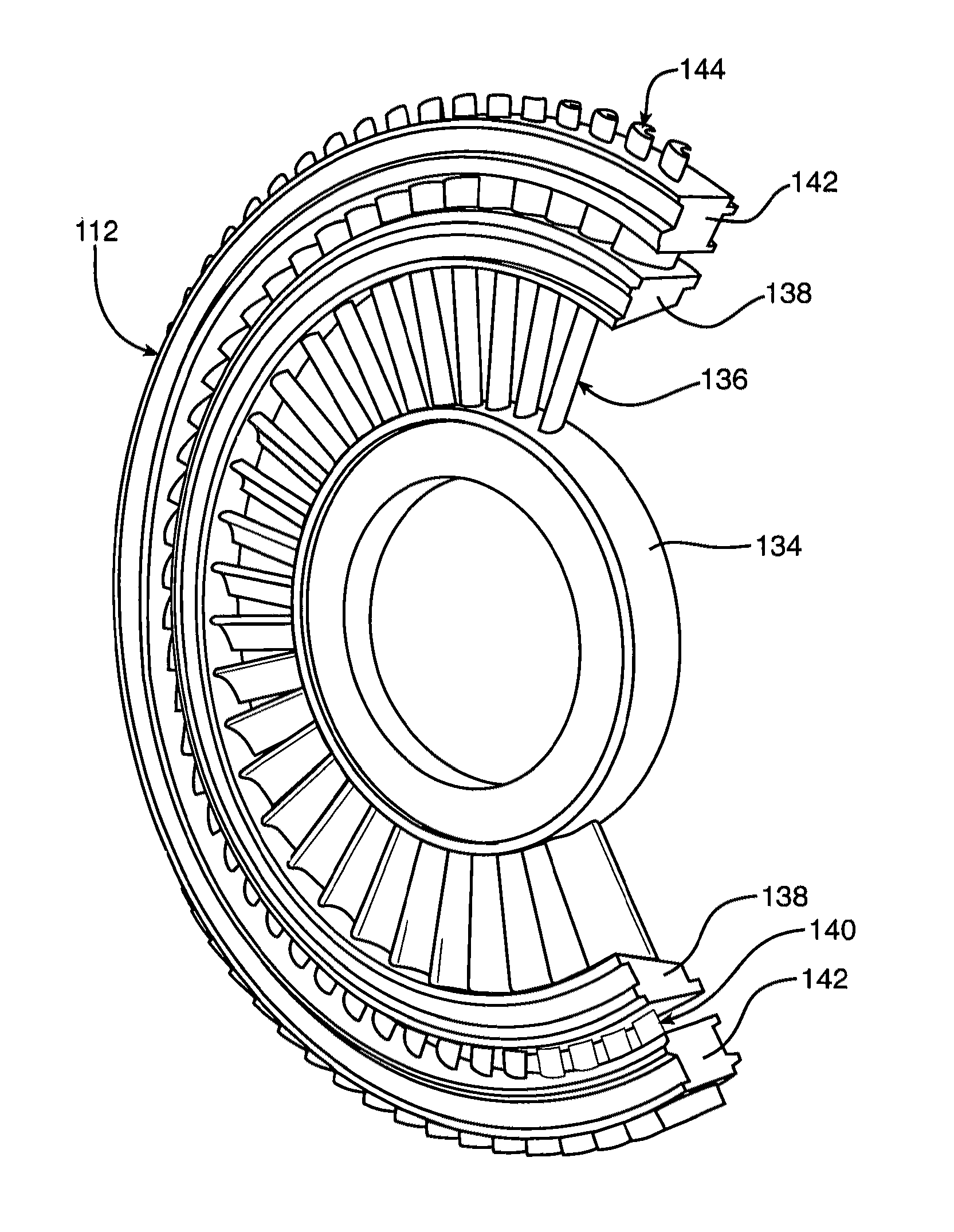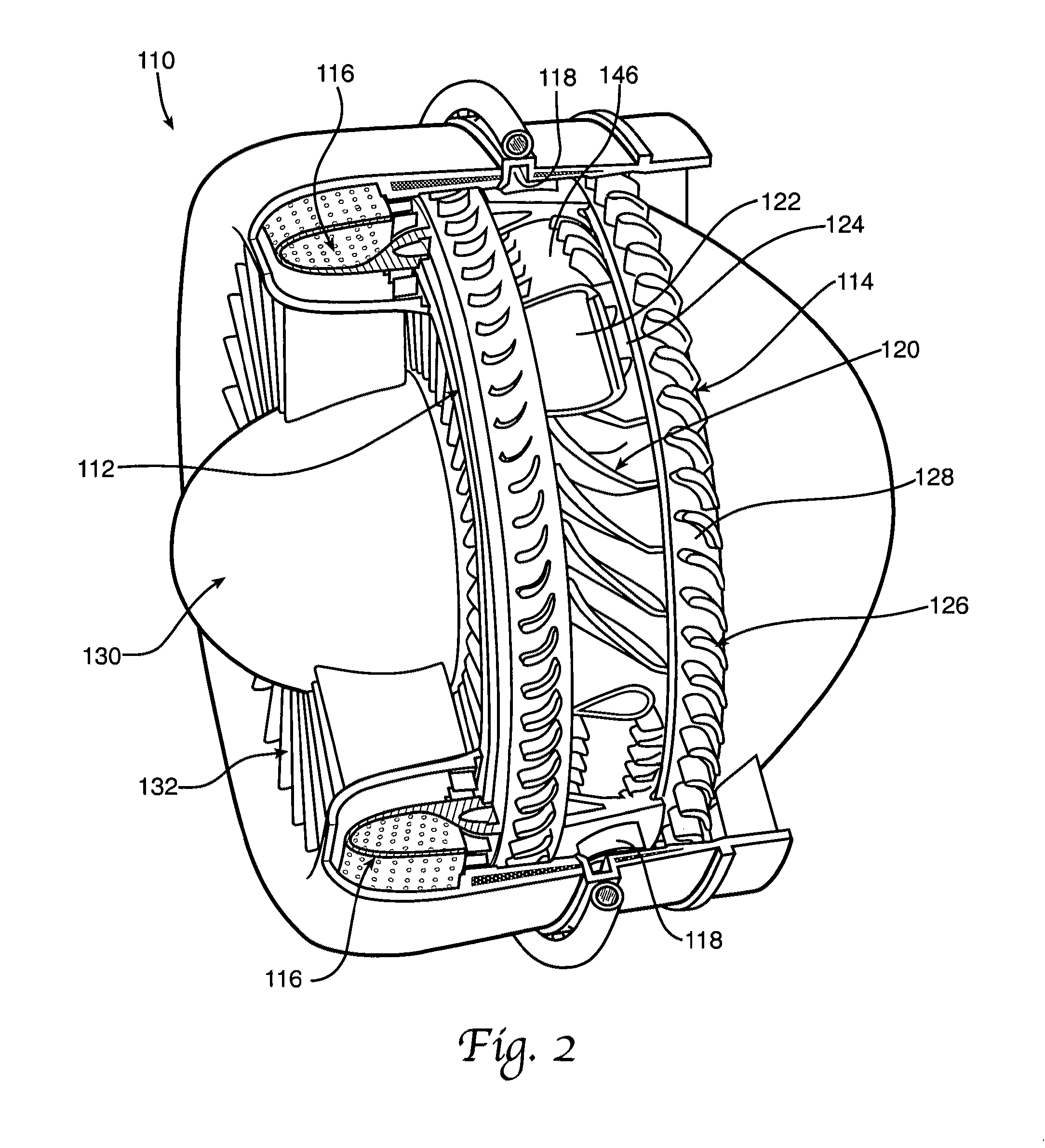Dual compression rotor
a technology of compression rotor and gas turbine engine, which is applied in the direction of machines/engines, efficient propulsion technologies, liquid fuel engines, etc., can solve the problems of engine operation efficiency only within a relatively narrow band, up design complexity and life cycle costs, and engine operation less efficiently during off design conditions
- Summary
- Abstract
- Description
- Claims
- Application Information
AI Technical Summary
Benefits of technology
Problems solved by technology
Method used
Image
Examples
Embodiment Construction
[0036]Referring to the drawings, FIG. 2 shows a cut-away view of the engine of the present invention, also called the revolutionary innovative turbine engine (RITE) 110. The engine 110 generally includes a dual compression rotor 112, a centrifugal compression rotor 114, a combustion chamber 116, and an inter-turbine burner 118. The rotors 112 and 114 are independently supported about a common axis of rotation. Independent support allows the rotors 112 and 114 to rotate independently of each other as well as rotate in the opposite or same direction. For example, the dual compression rotor may rotate clockwise or counterclockwise, and the centrifugal compression rotor may rotate in the opposite direction. Alternatively, the rotors 112 and 114 may both rotate clockwise or counterclockwise. The dual compression rotor 112 is described in more detail with reference to FIG. 6.
[0037]The centrifugal compression rotor 114 includes a plurality of blades 120 designed for radial compression of a...
PUM
 Login to View More
Login to View More Abstract
Description
Claims
Application Information
 Login to View More
Login to View More - R&D
- Intellectual Property
- Life Sciences
- Materials
- Tech Scout
- Unparalleled Data Quality
- Higher Quality Content
- 60% Fewer Hallucinations
Browse by: Latest US Patents, China's latest patents, Technical Efficacy Thesaurus, Application Domain, Technology Topic, Popular Technical Reports.
© 2025 PatSnap. All rights reserved.Legal|Privacy policy|Modern Slavery Act Transparency Statement|Sitemap|About US| Contact US: help@patsnap.com



